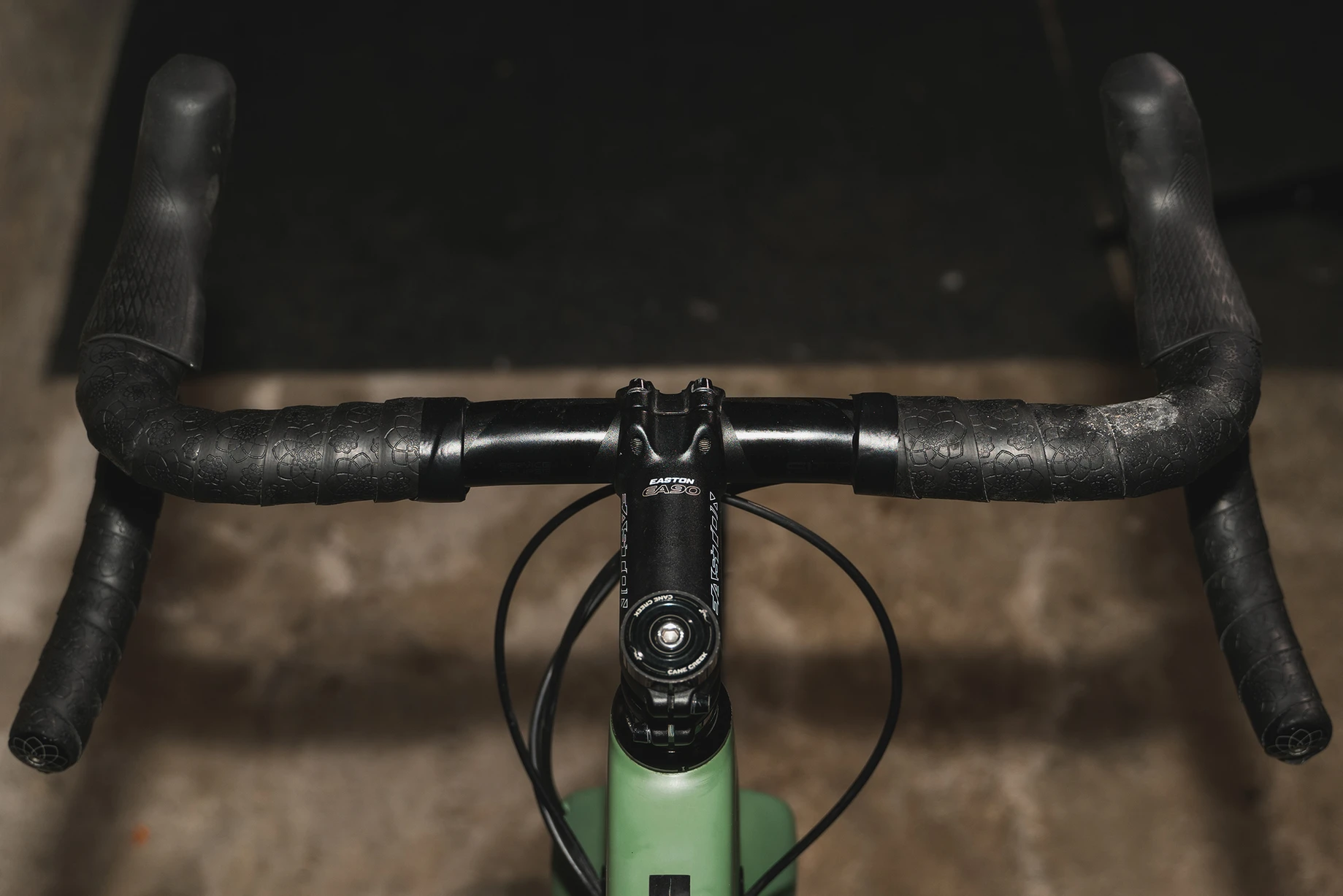Reviewed by Liam Friary
Distributor: Worralls
RRP: $212
As the style of riding changes, the components, the gear, wheels and bike have to change too. Riders are chasing mixed-terrain adventures on drop bars more than ever. The new flared shapes of handlebars are designed for mixed-terrain riding—whether that’s gravel, mud or singletrack. The flare opens out your arm span. On loose gravel and steep descents, the extra bar width creates extra control, increasing stability at higher speeds. Zipp’s been out in-the-field at gravel events state side prototyping and developing these bars – they’ve designed their bars for the hoods-dominant position, which most riders do these days.
So, what’s the diff from this handlebar compared to Zipp’s existing offerings? Well, it has outsweep, a shallower drop and slightly more flare. Most of Zipp’s popular road handlebars, already have 4° of drop flare, Zipp adds 1° more flare on its new 70 XPLR bars and then adds 11° of “outsweep,” an outward bend starting below the hood clamp. Zipp’s goal of this design is to keep the hoods relatively vertical, while adding a wider perch in the drops for technical riding. The drop of the Service Course 70 XPLR is at just 115mm, they have a 3° backsweep, and it has an also 70mm reach.

I’ve had these handlebars on a Santa Cruz Stigmata for a while now. This rig is ridden quite a lot and is capable (not the rider sometimes) at riding any terrain thrown in front of it. So, a good test for the 70 XPLR bars. Over the time I’ve had them, they’ve been super-comfy, and I really rate the shallow drop. As does my wife, who rides this bike quite a lot. She’s smaller than me and doesn’t rate the width, flare and drop of some of the gravel handlebars on the market. This means, when riding bikes with these bars, she doesn’t get into the drops, which makes riding rough terrain quite hard. As her hands get sore from being on the hoods. I’ve noticed her getting into the shallower drop of these bars more often, which has meant negotiating technical terrain better. And, subsequently leaving me behind on some of these descents.
As for me, I immediately liked the shape of the bars too. Over the past few years, flared bars have become increasingly popular. It’s all about the flare and outsweep; flare is created by rotating the entire drop above the brake levers outward; outsweep comes from rotating the drop below the brake lever outward. There’s a fair few handlebars out there with an extreme flare, I’ve ridden some and haven’t been overly impressed. Sometimes the cantered-over hood position isn’t that comfortable when haulin’ across gravel roads, sitting on the hoods for an extended period. Zipp’s nailed it with these bars; drops or hoods, the brake levers are within very easy reach. This means it’s easier to get full control on technical trails, which is confidence inspiring. They’re super compact and make it easy to get into the drops, which meant I used the drops a ton more.
Zipp’s always had good attention to detail, and these bars are no different, decals are understated and they’re nicely made. They’re stiff enough when dancing across rough, rutted and rowdy trails as with when stomping on the pedals out-of-the-saddle. I like the aluminium, and think it’s probably better for mixed-terrain. As, our tech-column writer, Cam Baker, states on here. Yep, they don’t have the vibration-damping qualities of a good carbon handlebar, though, so if you have deep pockets and are after more comfort then there are better alternatives. Overall, these are a good all-road, gravel, adventure handlebar, there’s been conscious thought given to the flare, which is appreciated when off-road. From a company that’s been at the forefront of aero-tech, it’ good to see that they’re exploring and making components for the diversity of mixed-terrain riding. I reckon we’ll be see Zipp XPLR products in the future as this sector of the market explodes.

